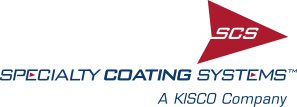<< View SCS Blog
Cleaning Methods for Conformal Coating
Cleaning the substrate is an essential element of preparation for conformal coating, and here are several key reasons why:
- Severe degradation of the coating’s dielectric strength and insulation resistance can result if the conformal film is applied to contaminated surfaces.
- Adhesion may be limited, causing the coating to peel or otherwise disengage from the substrate.
- Rework caused by replacing films detached from unclean surfaces can add significant labor cost.
Although taking the steps to assure that substrate surfaces are clean increases production time and expense, the consequences of applying conformal coatings to contaminated components is far costlier and more time-consuming in the end. In addition, clients seldom forget sub-standard work and are likely to take their business elsewhere.
Major Sources of Contamination
There are many sources of contamination, which generally occur before There are many sources of contamination, most of which generally occur before coating. Among the most prominent of these are unmonitored manufacturing processes, unclean transport/handling of the devices to-be-coated, and storage, especially for prolonged periods. Two broad categories of contaminants exist. It is important to recognize the differences, because each affects the conformal coating process differently.
- Ionic contaminants (ICs) erode into distinct, detached molecules underneath the coating layer. In doing so, they may become conductive, potentially leading to device short-circuits. ICs stimulate both corrosion and dendrites, the formation of minute vertical defects in the coating itself. ICs often originate during component manufacture and can originate from sources such as flux residues and unclean rinse solutions.
- Non-ionic contaminants (NICs) also lead to collection of debris and other foreign matter beneath the coating. Rather than short-circuiting electronic components, NICs interfere with coating adherence, potentially leaving the substrate exposed to further contamination and dysfunction. Typically, organic materials like grease, oil, or hand lotion cause NICs, but synthetic substances such as rosin or silicone are also NIC originators.
Reliable Testing/Cleaning Methods
Cleaning of electronic devices prior to film application is a basic and necessary function of reliable coating procedures. Circuits cleaned prior to conformal coating eliminate the presence of substrate residues, improving performance and reliability. Cleanliness testing is the first step of the process.
In certain cases, a quick-and-dirty test can be implemented by applying water or alcohol to a seen contaminant — water dissolves ICs, but only alcohol will dissolve NICs. Nevertheless, more comprehensive testing is advised.
ICs are commonly identified using the Resistivity of Solvent Extract (ROSE) method, initiated by measuring the conductivity of a cleaning solution deemed suitable for the project. If conductivity levels are acceptable, washing the substrate with the solution commences. A second test is run following the wash to determine contamination levels. An increase to the solution’s conductivity indicates IC contamination and the need for further cleaning.
Purified water is generally sufficient to clean substrate surfaces of ICs, but care must be taken. Inadequately purified water can deposit further ICs onto the designated surface, compounding the problem. For instance, substances like salt can remain on the substrate after cleansing water has evaporated. Iso-propyl alcohol can also be used to clean ICs.
ICP-TM-650 is a manual test that can be used to detect NICs. In this test, the subject board to be coated is rinsed with a dropper onto a pre-cleaned glass slide. A number of iterative steps are carefully followed with a visual inspection of the dried glass slide determining the cleanliness of the board.
The SCS Omegameter SMD V offers a more automated and repeatable method for board cleanliness testing and is highly recognized throughout the electronics industry.
Substrate cleanliness is a major component of the conformal coating process, sufficiently important that IPC devised quality standards for conformal coating projects. IPC-HDBK-830 addresses cleanliness issues in section 7.3.3. Substrate cleanliness is essential to conformal coating quality: Clean substrates coat well; those contaminated do not. Devices inadequately cleaned before application of conformal film suffer severe degradation of insulation resistance and dielectric strength, as well limited coating adhesion. The only way to manage the problem is to inspect and clean the board or other item before applying the coating, because once coated, it is too late.

